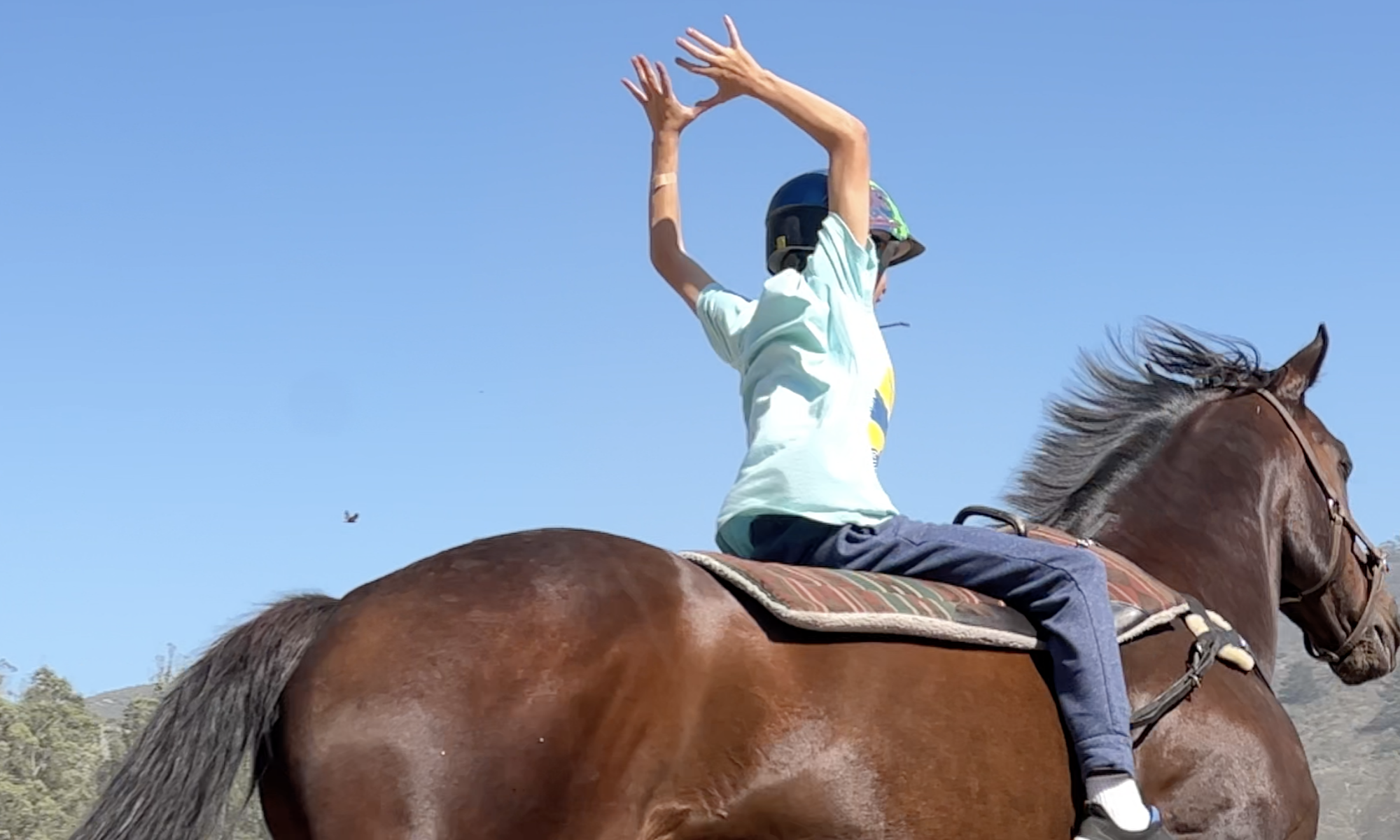Photo caption:Â just some of the OTTB’s, past and present at Square Pegs
[This is something I originally published about eight years ago. In light of all   the thoroughbreds that are needing rescue from slaughter lately,it seemed to merit re-posting.]
Somehow, the story always goes like this; “Poor Champ was skinny and abused when I bought him off the track for $200. I worked with him for 3 years and now he’s the loveliest horse in the world.”
So you think to yourself “Maybe I need to go to the track to get my ugly duckling to make into a swan.”
A word to the wise: Caveat Emptor.
Let’s look at the facts:
– Thoroughbreds are arguably one of the most athletic, versatile, beautiful horses around.
– They are also bred to run, prone to injury and thin-skinned.
– Imported European Sporthorse prospects are commonly priced at $15,000 and up, so a *free* thoroughbred sounds like a great bargain.
– At your local racetrack, there can be as many a 1200 horses stabled on the grounds, a veritable smorgasbord of horse shopping!
So you want to go shopping for an ex-racehorse.
First things first. Bring your trainer or another trusted full-time horse professional. This person will be able to assess confirmation, attitude and soundness better than if you go alone and fall in love with the first 17-hh dapple-gray 2 year old filly that you see.
Next, learn the following common racetrack terms that you will encounter.
Bleeder: a condition that indicates the horse has demonstrated internal bleeding in the lungs when racing or training. It is estimated that up to 80% of Tb’s racing in North America exhibit this problem. While a bleeder will not usually show complications of the condition when used for trail riding or lower speed sports, it can be a problem if the horse is intended for upper level Eventing or other long distance disciplines.
Bowed Tendon: This is when the tendon fibers of the lower leg are torn or inflamed. . A compromised tendon will never be as flexible as one that hasn’t been injured. General rule of thumb for a tendon is 6 to 12 months lay-up before returning to regular work. However, many horses with healed bowed tendons compete regularly.
Chipped Knee or Chipped Ankle (aka “bone spur”): as the term implies, this indicates that a bone chip is present in the joint. It often means that the animal should undergo orthoscopic surgery. Lay-up time can be 2 to 6 months. Ask to see x-rays and share them with your vet.
Take into consideration your goals, riding level, budget, facilities and time-frame. Be realistic about what you are looking for. It’s very easy to fall in love with a beautiful 2-year-old filly with a tendon problem. But unless you are prepared to wait two years before your first show, she probably isn’t an option.
Former racehorses are some of the most sensitive, intelligent and versatile animals around. Be patient and practical about your riding goals and abilities. Do your homework and you may find your next superstar and/or equine companion at the track. Never forget a thorough vet check is a minor investment in a long-term relationship.

